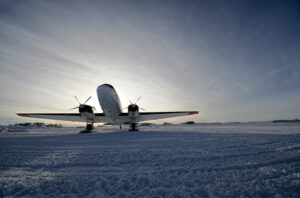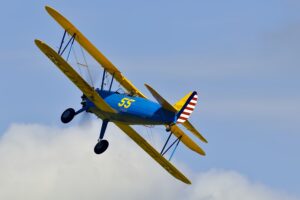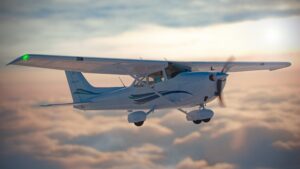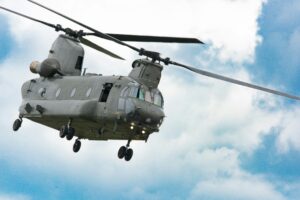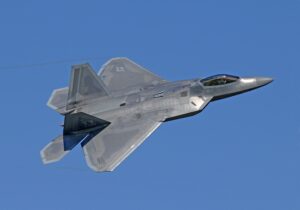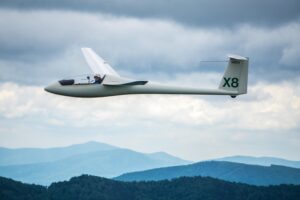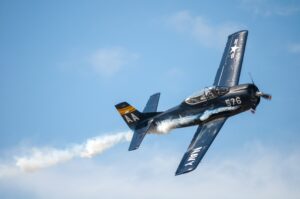Myth: Higher speed air means lower pressure
Reality: Unconfined flowing air has the same pressure as the environment
The myth is that higher velocity air results in lower static pressure. This is taken as gospel. However, in all cases, except for one rare case, this is never true. Every aircraft – except the most basic, like a hang glider – has a device that disproves this idea. We’ll discuss this “magical” device in a moment.
First, we must take on the main source of this myth. Bernoulli. Actually, Bernoulli is fine. The problem lies in the misunderstanding and therefore misapplication of the Bernoulli equation.
The Bernoulli equation is a simple statement of pressure that relates a constant Total Pressure to the inverse relationship between Static Pressure and Dynamic Pressure.
Total Pressure (constant value) = Static Pressure + Dynamic Pressure
People learn that the Bernoulli equation states that when a fluid’s velocity (Dynamic Pressure) increases, the static pressure decreases. The problem is that people then incorrectly apply this concept to every instance of higher velocity fluid. A few examples include: a wing developing lift, water accelerating when a river narrows, and a strong wind ripping off a roof.
When a person sees high velocity fluid, they “know” that the static pressure is lower. But the Bernoulli equation is only applicable when the air is in a confined space, like a venturi or a pipe. Ironically, even these don’t fully adhere to the Bernoulli equation because of the law of Conservation of Energy.
We must make it 100% clear that faster-flowing unconfined air does NOT have a lower static pressure. Refer to Figure 1. The flow of air out of the nozzle will always adapt to the static pressure of the environment. Higher-pressure air will expand, and lower-pressure air will contract. An unconfined flowing fluid will always have the static pressure of the environment. This is true for air flowing around a wing. But more on that later.
We discuss the Conservation of Energy and the Bernoulli equation at the end of this webpage. Here’s a teaser for that section: If the Bernoulli equation applied to a wing developing lift, lift would be developed without requiring any work, e.g., drag, being produced due to the requirement of energy being conserved. Aircraft designers would love that outcome, but the physics of reality isn’t so generous.
The takeaway from this section is this: In unconfined air, there is no inverse relationship between Total, Static, and Dynamic pressure.
The Big Reveal!
We promised to reveal the “magical” device almost every aircraft has that proves a higher velocity fluid (air in this case) is not related to a change in static pressure.
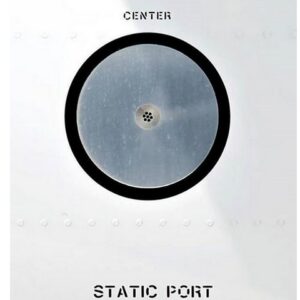
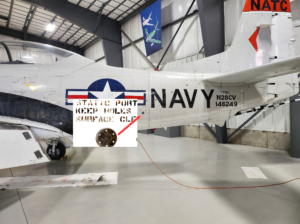
The Static Port
In unconfined flow, such as the air over the wing, velocity and pressure are not related by the Bernoulli equation. In unconfined flow, the static pressure of the flowing fluid is the same as that of the surrounding air. There is no “membrane” confining the flow.
The simplest demonstration of this statement is the static port on an airplane. The static port is a small hole in the side of the fuselage that provides the static air pressure to the pitot-static system, which comprises the altimeter, airspeed indicator, and other instruments. Figures 2 & 3 show an airplane’s static port and a close-up of a static port.
The altimeter displays the aircraft’s altitude and can determine a varying altitude within a few feet via a change in the air pressure. Take three conditions of the static port. 1) an aircraft on the ramp with the engine shut off, 2) during the engine pre-flight run up with the propeller causing air to flow over the static port at 100 knots, or 3) in flight at 200 knots. In all three conditions, the static port provides the correct air pressure, and therefore the correct altitude is displayed. Thus, the air pressure is the same for still air, for high velocity air flowing over the static port, or the static port moving through still air.
Regarding the development of lift, the air pressure on a wing’s upper surface has a lower pressure than the air pressure on a wing’s lower surface. What creates the lower air pressure? It’s due to the wing’s sloping surface drawing a vacuum. This creates space that lowers the pressure. The lower pressure accelerates the air above the wing perpendicularly to the wing’s motion. This will be discussed in greater detail in Misapplication #3. This explanation exposes the myth that the lower pressure is caused by higher velocity air flowing over the wing’s upper surface. The reality is the opposite. The lower pressure causes the higher velocity air.
The takeaway is:
The velocity and pressure of unconfined flowing air are not related by the Bernoulli equation. The air coming out of the nozzle of a high-pressure air hose will have a high static pressure that quickly adjusts to the pressure of the surrounding air.
Bernoulli deeper dive.
Physics has very robust conservation laws. Among them are the Conservation of Energy, the Conservation of Momentum, and the Conservation of Angular Momentum. These laws hold when a bat hits a ball; a bomb goes off; a large truck collides with a small car; or when a Mars-sized planet collides with the Earth, tilting the Earth, and producing the Moon. When one hears of the Conservation of Energy, it holds real weight and authority. As noted earlier on this webpage, the Bernoulli equation is only applicable when a fluid is in a confined space, like a pipe or a venturi. In principle, in a confined space, no energy can be added to or extracted from the system, which is a requirement of the Conservation of Energy and a constraint to which the correct application of the Bernoulli equation is necessary.
The Bernoulli equation describes the air pressure relationship of a constant Total pressure to the inversely related Static and Dynamic pressures in an idealized world. In this idealized world, the following is true:
- The fluid must be incompressible
- Friction and viscosity do not exist
- Actions occur without work being performed
- No energy is added to or extracted by an external source
The first three conditions do not exist in the real world. A fluid can be compressible, friction and viscosity exist, and action requires work to be performed; therefore, in the real world, the Bernoulli equation is only an approximation because the equation leaves out energy loss due to friction and viscosity. The fourth condition can be satisfied by confining the fluid in a space like a venturi or pipe. Hence, the Bernoulli equation only achieves: 1) explaining how a venturi works, 2) confusing those interested in understanding flight, and 3) making fluid dynamists happy.
When a wing develops lift, work is performed by adding substantial momentum to the air (known as downwash) and by overcoming induced drag. The Bernoulli equation is fine when correctly applied to a fluid in a confined space, but it doesn’t apply to the development of lift or any case of a flowing fluid in an unconfined space. A few examples of the misapplication of the Bernoulli principle are:
- Lift on a wing
- A ping pong ball confined in a jet of air
- Hurricane winds ripping the roof off a house
- A curveball
- The “Bernoulli strip”
- Air drawn into a Bunsen burner
- An atomizer
The Bernoulli strip and a ping pong ball trapped in a jet of air are examples of the Coanda effect. A curve ball and a bullet going high or low due to a crosswind are examples of the Magnus effect, which is the Coanda effect applied to rotating objects. A Bunsen burner drawing air or an atomizer is the same physics as the draft up a chimney. All phenomena, other than the venturi, have nothing to do with the Bernoulli equation. This is all discussed in greater detail in Coanda and Bernoulli.
As discussed in Aeronautics and the Bernoulli Principle, the Bernoulli equation can be used for calculations in the correct reference frame, but never as a description of the physics of lift.
